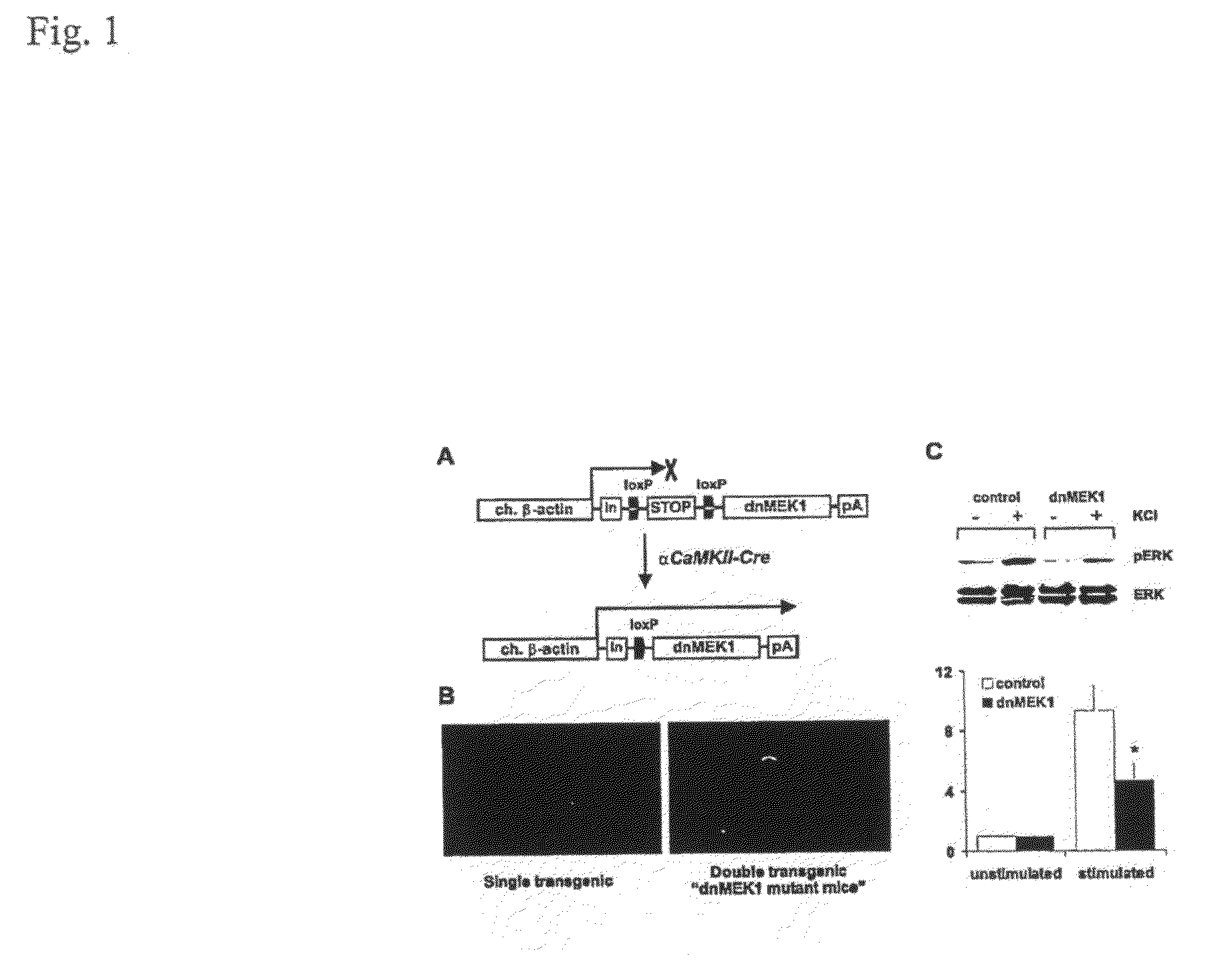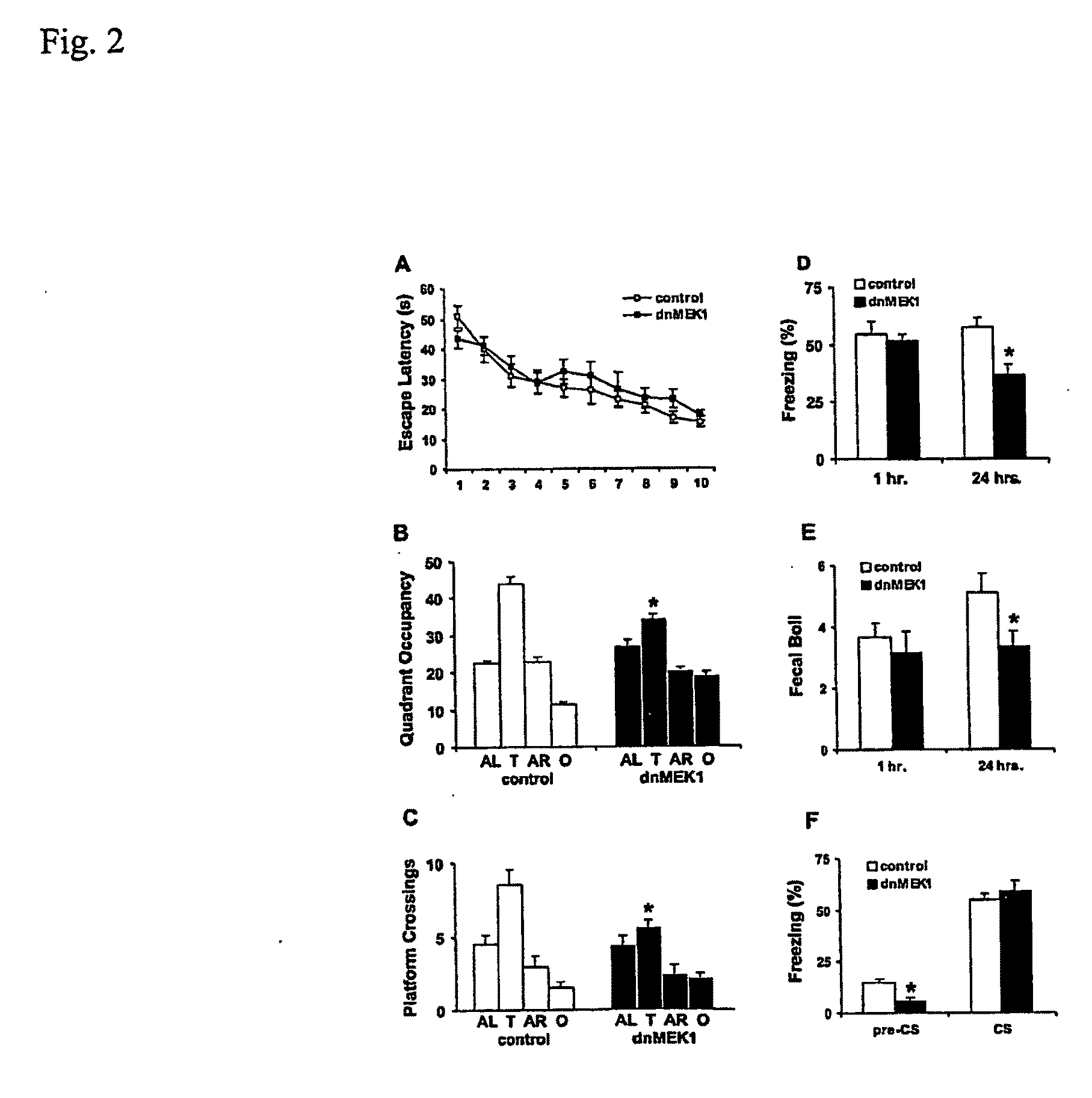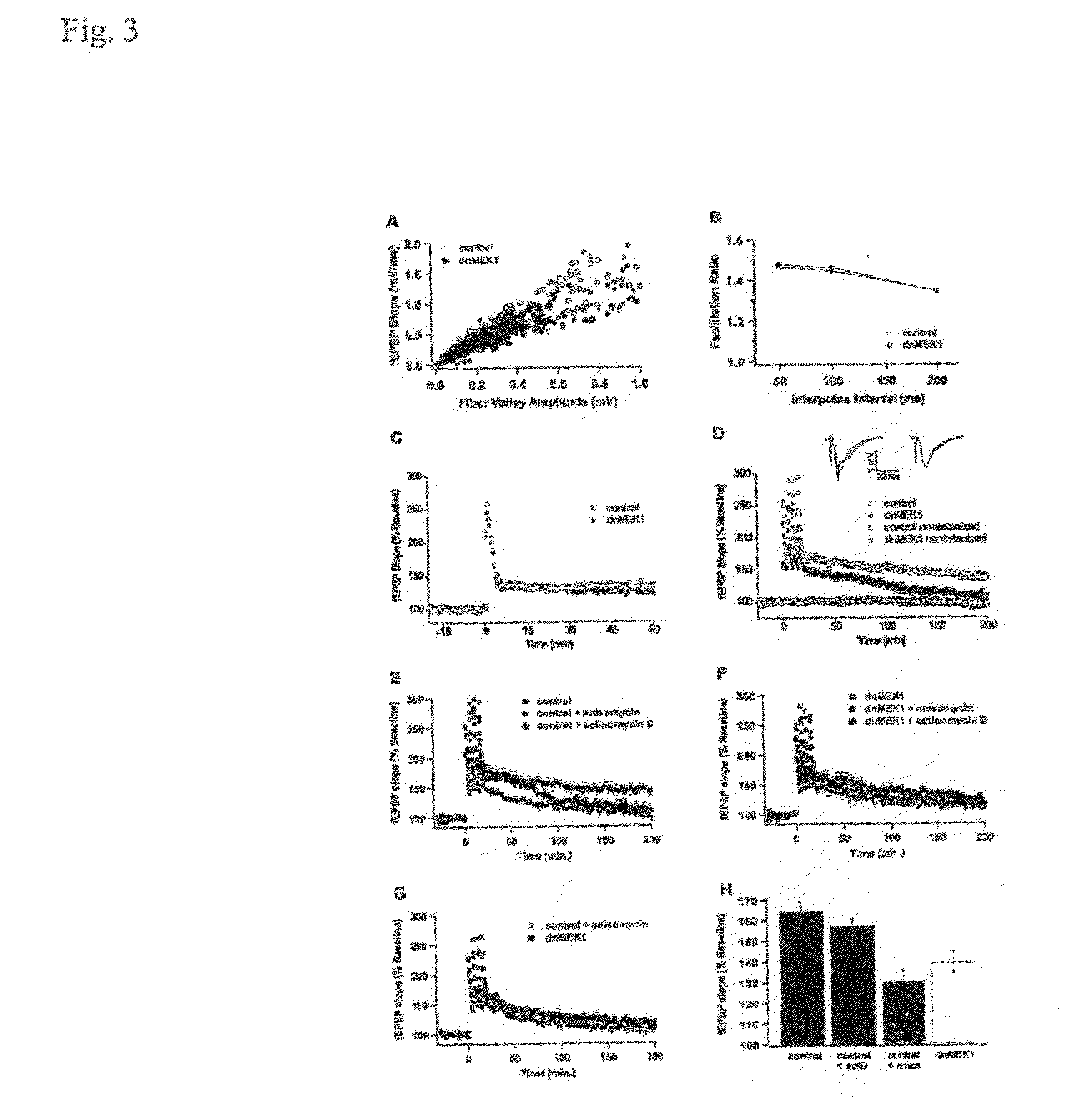Compositions and Methods for Modulating Cognitive Function
a cognitive function and composition technology, applied in the field of compositions and methods for modulating cognitive function, can solve the problems of modest improvement of symptoms, lack of effective pharmacological methods for enhancing memory formation, and lack of evidence of efficacy in slowing the progression of diseas
- Summary
- Abstract
- Description
- Claims
- Application Information
AI Technical Summary
Benefits of technology
Problems solved by technology
Method used
Image
Examples
example 1
Generation and Characterization of Conditional Transgenic Mice Expressing Dominant-Negative MEK1 in the Postnatal Forebrain
[0242]Materials and Methods
[0243]Plasmid constructions. The conditional transgene vector pCLSL contains a floxed transcriptional and translational ‘stop’ cassette (Lakso et al., 1992) inserted downstream of promoter sequences derived from the chicken β-actin gene. A dominant-negative MEK1 cDNA bearing a K97M mutation and the SV40 late polyadenylation signal was derived from pMCL-dnMEK1 (gift of N. Ahn) and inserted downstream of the stop cassette in pCLSL to generate pCLSL-dnMEK1. pCMV-EGFP-CKUTR was derived from pEGFP-N1 by deletion of the SV40 polyadenylation signal and insertion of a 160-bp PCR fragment encoding the distal sequences of the αCaMKII 3′ UTR (including both CPEs and the hexamer sequence (Wu et al., 1998)). The αCaMKII 3′ UTR fragment was amplified from a rat brain Marathon cDNA library (Clontech). CPE mutations were introduced using previously de...
example 2
Inhibiting ERK Signaling Causes Impaired Spatial Reference Memory
[0250]Materials and Methods
[0251]Mouse behavioral studies. The Morris water maze and fear conditioning tasks were conducted essentially as described (Tsien et al., 1996; Zeng et al., 2001). The training phase for the hidden platform task of the Morris water maze consisted of two blocks of four 60-sec. trials per day for a total of five consecutive days. Probe trials (60 sec.) were administered following the completion of training. The training sessions for contextual and cued fear conditioning consisted of a three-minute exploration period followed by three CS-US pairings separated by one minute each (foot-shock intensity 0.75 mA, duration 0.5 sec; tone 75 db white noise, 30-sec. duration.). Context tests were performed in the training chamber after retention delays of 60 minutes and 24 hours. Tone tests were performed in a distinct chamber located in a different room; baseline freezing was monitored (2 min.) prior to ...
example 3
Inhibiting ERK Signaling Causes Selective Impairment in Long-Term Contextual Memory
[0254]Materials and Methods. See Example 2.
[0255]Results
[0256]To examine the process of memory consolidation more closely, we turned to contextual fear conditioning, a hippocampus-dependent behavioral paradigm in which robust long-term memory for an experimental context is established following a single training session (Kim and Fanselow, 1992; Phillips and LeDoux, 1992). Administration of protein synthesis inhibitors prior to fear conditioning in rodents has been shown to disrupt long-term memory within 24 hours following training, while short-term memory remained intact (Abel et al., 1997; Schafe et al., 1999). Groups of control and mutant mice were therefore subjected to contextual fear conditioning and tested for memory of the experimental context after retention delays of one hour and 24 hours. Both control and mutant mice exhibited equivalent levels of freezing during the training session and af...
PUM
| Property | Measurement | Unit |
|---|---|---|
| Fraction | aaaaa | aaaaa |
| Fraction | aaaaa | aaaaa |
| Fraction | aaaaa | aaaaa |
Abstract
Description
Claims
Application Information
 Login to View More
Login to View More - R&D
- Intellectual Property
- Life Sciences
- Materials
- Tech Scout
- Unparalleled Data Quality
- Higher Quality Content
- 60% Fewer Hallucinations
Browse by: Latest US Patents, China's latest patents, Technical Efficacy Thesaurus, Application Domain, Technology Topic, Popular Technical Reports.
© 2025 PatSnap. All rights reserved.Legal|Privacy policy|Modern Slavery Act Transparency Statement|Sitemap|About US| Contact US: help@patsnap.com



